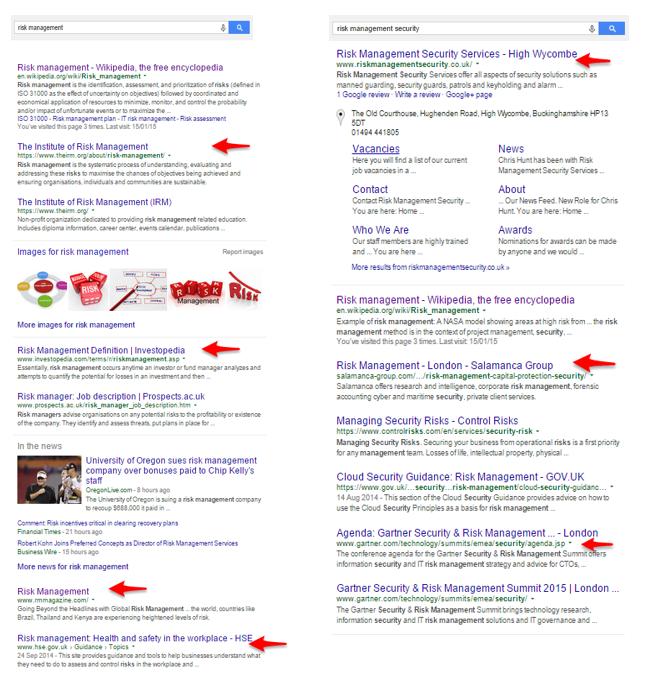
18 Feb Let Your Competitors Help Your SEO
Let’s face it, we all have a love/hate relationship with our competitors. But as the wonderful world wide web grows, we as digital marketing guru’s need to think outside the box. Especially when the web is becoming more competitive for a huge range of keywords. Although, wearing your thinking caps way outside the box, may just land you in trouble with our good friend Google.
Utilising your competitors effectively can really aid your sites link building strategies. B2B and B2C orientated sites should not only conduct a competitor analysis once, but use it as an ongoing process.
Remember Google likes fresh content and fresh links! More frequently than ever, achieving those keywords can be rigorous in terms of the competition you face. Each website will always strive to market their USP and that’s where analysing competitors link building activities can help acquire various interesting links pretty quickly and very effectively.
Who are your competitors?
To begin the initial competitor analysis you should never look too far away. Conducting a simple Google search for the keyword you’re aiming to rank highly for will give you a good idea of who your competitors are.
Search results can generate sites such as digital magazine sites on page 1 results. However, it is best not to use those kind of sites as using a competitor who provides the same product or service can bring you more potential sites to work with. Having a quick glance at the URL structure, site description, title tags can give us an indication of what type of site it is.
The following screen grab displays search results for keyword “risk management”. The search results on position 1 show no companies selling a product or service rather showing, institute organisations, Wikipedia pages and definitions. Let’s change the search by making the search query a little more specific with “risk management security”. Ensure search queries are specific enough because the competitors you find for one product or service will probably not be in the same ranking in the same position for a different product or service.
“Jump straight into the deep end”
Backlinks: Collect > Analyse > Filter
For us SEO guru’s we love diving in nose deep into a bunch of links! Analysing competitors’ backlinks can ultimately prove to be the light at the end of the tunnel for those struggling with link building strategies.
Simply, a backlink is a link from one web page to another website, which means one site can have more than one back link from another site or referring domain. The way the Google Algorithm has developed over the last few years has changed the way link building strategies are implemented and carried out. Like before SEO was closely related to the quantity of links. Now Google likes to see high quality back links with high domain authority. A collection of backlinks from a site will also consist of spammy webpages such as automated directories which can have you penalised by Google – and that’s the last message you want to see in Webmaster Tools.
A list of competitors can also be categorised further with the use of location keywords for sites targeted multiple geographic locations.
Generating competitors’ backlinks can be done through the use of popular tools such as Majestic SEO and Open Site Explorer from Moz. Generally, a list of backlinks can all be potential opportunities however the only backlinks worth analysing are those with high domain authority or moderate metric figures like trust and citation flow.
Link Building Opportunities
“Explore the treasure chest”
Working with the highest quality links from your competitors increases your chances of acquiring potential links especially if you are operating in the same niche. Clicking through each link and finding your competitors’ link is the most exciting part. Remember links can be implemented through a guest post, blog comment, infographic visual or even a simple company directory listing.
Good quality content which meets the audience’s needs and raises a call to action will always perform well when acquiring links compared to your simple “Top 10 guide”. Keeping that initiative drilled throughout the competitor analysis process will be key for strategies to be successful. For example using content curation methods with competitors published guest posts that offer better value to sites and thus can be a way to acquire a link.
Finding a broken link from a competitor through the competitor analysis also allows the opportunity for us to find out what type of content was used by submitting the dead URL link through the Way Back Machine. Identifying the broken link to website editors or bloggers adds an extra incentive for them to link to you instead along with a newly curated content piece. If you’re looking for deeper insights and opportunities, you can throw the dead link through Open Site Explorer to find any more inbound links that can also be outreached to in the same way.
On Going Questions That Should Be Asked Through A Competitor Analysis
Whilst just gaining link building opportunities, a competitor analysis can help websites answer a load more questions:
- What SEO strategies are your competitors using?
- What type of content do your competitors use and has it been shared across social media platforms?
- What area of your shared market are they excelling in?
- Which pages are generating the most backlinks?
- What type of anchor text is used?
- How do your rankings compare to your top 3 competitors?


No Comments